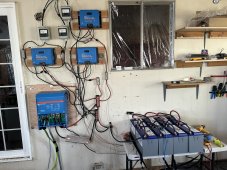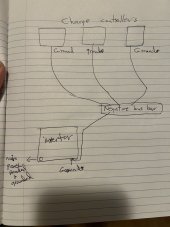I’m presenting a diagram drawn out from PV to breaker disconnect to charge controllers to ground bar to inverter. The inverter goes to the main panel and is grounded and bonded. All equipment is victron.
I’m just asking one simple question is this right or is it wrong? Does the grounding look right? Thanks! ?
PS: this is for a house, not an off grid place or a van.
I’m just asking one simple question is this right or is it wrong? Does the grounding look right? Thanks! ?
PS: this is for a house, not an off grid place or a van.
Attachments
Last edited:






